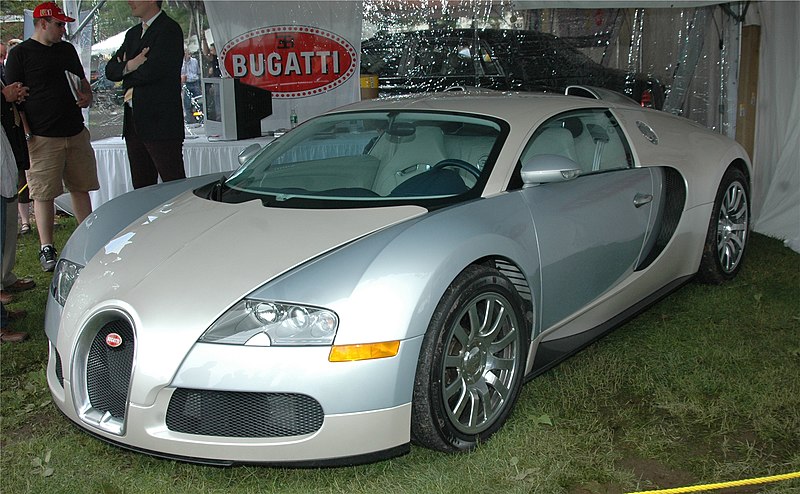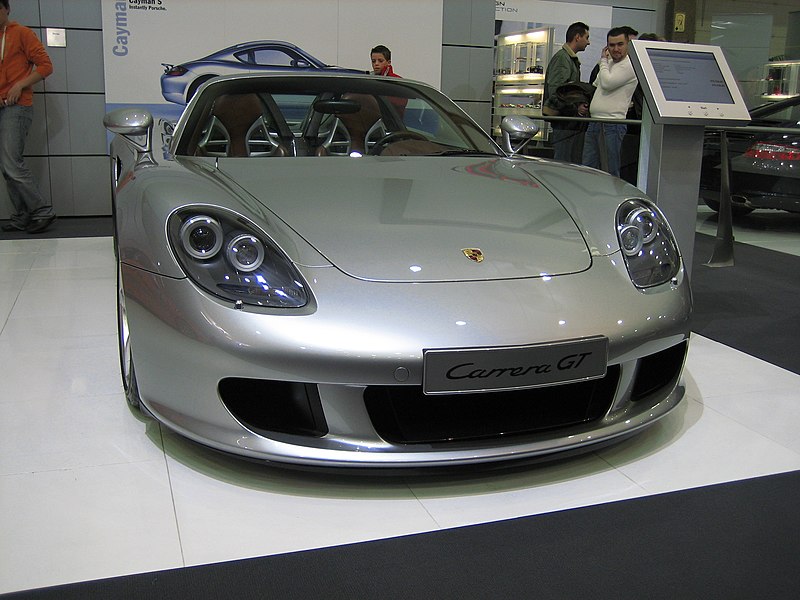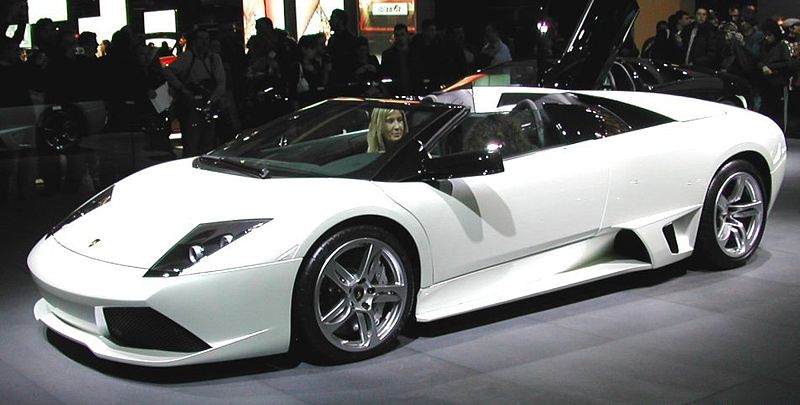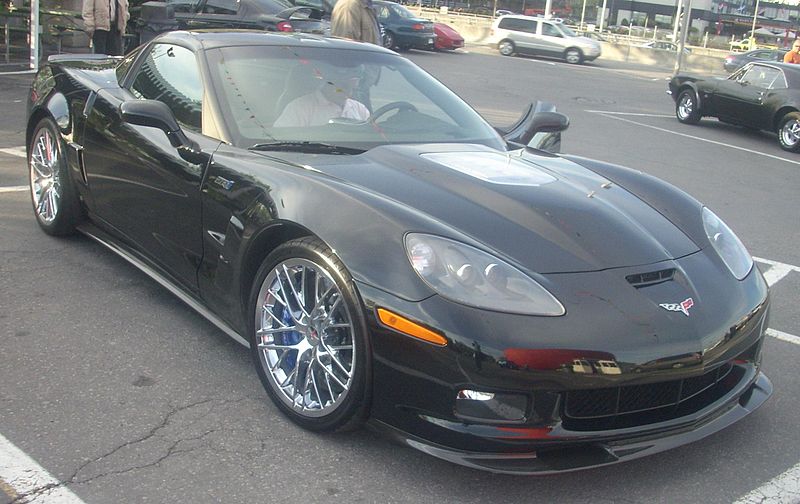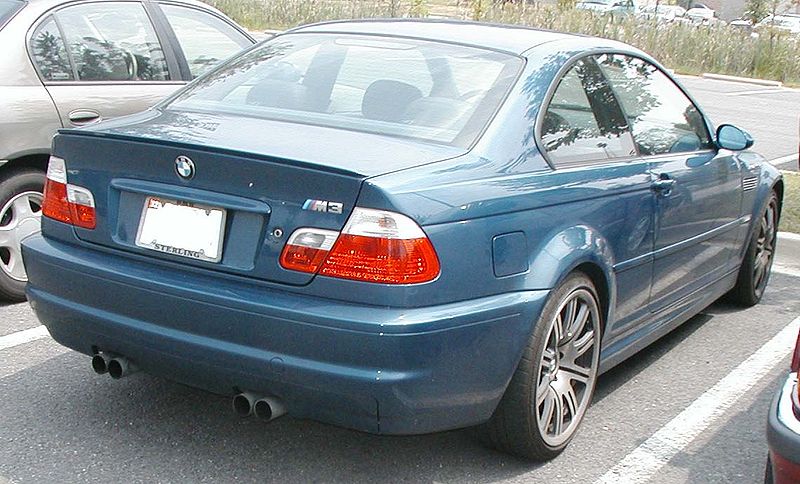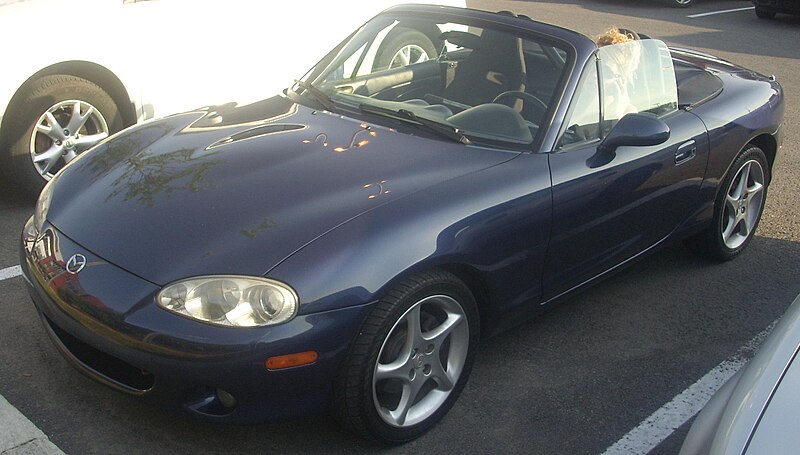The dawn of the new millennium was a dynamic era for the car industry. There were so many groundbreaking innovations, design revolutions, and performance milestones. Along with a growing consciousness of environmental sustainability, the 2000s produced some of the most remarkable cars. Let’s embark on a journey to explore the best cars that not only defined the decade but also set new benchmarks for the future.
Technological Marvels and Design Innovations
These are some of the exceptional cars from the 2000s that exemplify this era’s groundbreaking achievements in automotive technology and design.
1. Bugatti Veyron (2005)
Unveiled in 2005, the Bugatti Veyron was not just a car; it was a statement of engineering prowess. With its 8.0-liter W16 engine producing a staggering 1001 horsepower, the Veyron shattered speed records, achieving a top speed of 253 mph. This masterpiece combined luxury with performance, making it the poster child for automotive extravagance in the 2000s.
2. Ferrari Enzo (2002)
Named after the company’s founder, Enzo Ferrari, this car was a tribute to the brand’s racing heritage. Powered by a 6.0-liter V12 engine, the Enzo was a pinnacle of performance and design, encapsulating Ferrari’s Formula 1 technology. Its distinctive styling and limited production run made it a coveted gem for collectors.
3. Porsche Carrera GT (2004)
Porsche’s Carrera GT, with its timeless design and raw performance, was a dream come true for automotive enthusiasts. The heart of this beast was a 5.7-liter V10 engine that exuded a symphony every time it revved. The Carrera GT was not only fast but also a marvel of engineering with its carbon-fiber monocoque and subframe.
4. McLaren SLR (2003)
The McLaren SLR, a product of the collaboration between McLaren Automotive and Mercedes-Benz, was a grand tourer that combined luxury with incredible performance. Introduced in 2003, it was powered by a supercharged 5.4-liter V8 engine, producing 617 horsepower. The SLR stood out for its unique design, which included a long hood and gull-wing doors, and its use of carbon fiber construction. It was a fusion of McLaren’s F1 technology and Mercedes-Benz’s luxury craftsmanship, symbolizing the technological advancements of its time.
5. Lamborghini Murciélago (2001)
The Lamborghini Murciélago, launched in 2001, was a testament to Lamborghini’s commitment to extreme design and performance. As the successor to the legendary Diablo, the Murciélago featured a 6.2-liter V12 engine, which later evolved into a 6.5-liter in the LP 640 variant. This powerhouse delivered breathtaking performance and was the brand’s flagship model during the 2000s. Its aggressive styling, scissor doors, and remarkable speed solidified Lamborghini’s reputation for creating some of the most exciting and visually striking supercars of the era.
6. Aston Martin DB9 (2004)
The Aston Martin DB9, introduced in 2004, was a blend of elegance, luxury, and performance. Powered by a 6.0-liter V12 engine, the DB9 was not just about speed; it epitomized British sophistication and grand touring capability. The car’s design was both classic and modern, featuring a timeless silhouette that has influenced Aston Martin designs for years to come. The DB9 was a significant model for Aston Martin, showcasing their ability to produce a car that was both beautifully designed and technologically advanced.
7. Chevrolet Corvette ZR1 (2009)
In 2009, the Chevrolet Corvette ZR1 burst onto the scene with a mind-blowing 638-hp supercharged 6.2-liter V-8, making it General Motors’ most powerful car ever. But it’s not just about the power of this car. Developed on GM’s exhilarating proving ground course, the ZR1 turned the Corvette chassis into something extraordinary. Thanks to its magnetorheological dampers, carbon-ceramic brake rotors, a racetrack-ready stability control system, and Michelin Pilot Sport PS2, the ZR1 was a marvel.
8. Ford GT (2004)
This was a nod to the legendary Ford GT40s of the ’60s, and it wasn’t just about looking back – it was about beating Ferrari on the streets. With a 5.4-litre supercharged V8 engine under the hood, this GT boasted 550 horsepower, catapulting it from 0-60mph in a mere 3.5 seconds and reaching a top speed of 205mph. The GT was a far cry from the stereotype of American cars as big, heavy barges. Its marriage of a monstrous V8 with a sleek aluminum chassis created a driving experience that was nothing short of exhilarating, proving that American engineering could hold its own against the best in the world.
The Eco-Friendly and Technologically Advanced Vehicles
1. Toyota Prius (2001)
The Toyota Prius became synonymous with hybrid technology. Launched in 2001, it was one of the first mass-produced hybrid vehicles. The Prius made eco-friendliness mainstream, offering remarkable fuel efficiency and reduced emissions, thus changing the way the world viewed environmentally conscious driving.
2. Tesla Roadster (2008)
The Tesla Roadster was a game-changer in the world of electric vehicles (EVs). It shattered the myth that EVs couldn’t be fast or fun. With its impressive range and acceleration, the Roadster was a glimpse into the future of electric mobility.
3. Honda Insight (First Generation, 2000)
The Honda Insight was a trailblazer in the hybrid vehicle segment. Introduced in 2000, it was America’s first hybrid car, even before the Toyota Prius became widely available in the U.S. The Insight was designed with aerodynamic efficiency in mind, featuring a teardrop-shaped body and a lightweight aluminum structure. Its Integrated Motor Assist (IMA) system combined a small gasoline engine with an electric motor, offering exceptional fuel economy.
4. Lexus RX 400h (2005)
The Lexus RX 400h, introduced in 2005, was a significant milestone as it was one of the first luxury hybrid SUVs. It demonstrated that eco-friendly vehicles could also be luxurious and powerful. The RX 400h combined a V6 engine with electric motors, providing a smooth and responsive driving experience while maintaining higher fuel efficiency and lower emissions than its non-hybrid counterparts. This vehicle played a crucial role in popularizing hybrid technology in the luxury car market, paving the way for future advancements in green automotive luxury.
5. Chevrolet Volt (Concept 2007, Production 2010)
The Chevrolet Volt was initially unveiled as a concept car in 2007 and launched in 2010, marking a significant innovation in the field of electric vehicles. The Volt was one of the first mass-produced plug-in hybrid electric vehicles (PHEVs), offering an electric-only range followed by a gasoline-powered generator for longer trips. This unique approach addressed the range anxiety associated with electric vehicles at the time. The Volt showcased General Motors’ commitment to electrification and played a crucial role in advancing the acceptance and popularity of PHEVs.
Performance and Luxury Cars
1. BMW M3 (E46, 2000)
The BMW M3 (E46) was a perfect blend of performance and everyday usability. Its 3.2-liter inline-six engine provided an exhilarating driving experience, making it a favorite among enthusiasts. The M3 was not just a performance car; it was a luxury vehicle that could be driven every day.
2. BMW M3 CSL (2003)
In 2004, BMW graced the world with the M3 CSL. This wasn’t just any M3 – it was a rare gem, joining the ranks of only two BMWs ever to wear the CSL badge. The other was the legendary 3.0 CSL from the ’70s. The E46 M3 CSL was a marvel, shedding 110kg from the regular M3, thanks to futuristic features like a carbon-fiber roof, a composite body kit, thinner glass, and even a cardboard boot floor. Its 3.2-litre straight-six engine, producing 360hp, could catapult the car to 60mph in just 4.9 seconds, topping out at 155mph. It was celebrated for its razor-sharp handling and sweet engine, securing its status as a true modern classic.
3. Audi R8 (2008)
The Audi R8 was a supercar that you could use daily. With its striking design and Quattro all-wheel-drive system, the R8 offered both performance and practicality. Its 4.2-liter V8 engine, derived from the RS4, provided the power and sound that enthusiasts craved.
4. Mercedes-Benz SLR McLaren (2003)
The Mercedes-Benz SLR McLaren is a testament to what happens when a historic carmaker and a Formula 1 team collaborate. Unveiled in 2003, this grand tourer combined Mercedes-Benz’s luxury craftsmanship with McLaren’s racing expertise. Powered by a supercharged 5.4-liter V8 engine, the SLR McLaren was not just fast, but its dramatic styling, winged doors, and plush interior also made it a luxurious, high-tech marvel. It was a car that could deliver thrilling performance while wrapping its occupants in opulent comfort.
5. Aston Martin DB9 (2004)
Introduced in 2004, the Aston Martin DB9 was the epitome of British elegance and performance. The DB9 was more than a beautiful car; it was a powerhouse, thanks to its 6.0-liter V12 engine. Its design was timeless, and the interior was a mix of traditional craftsmanship and modern technology, offering an exquisite blend of luxury and performance. The DB9 wasn’t just a car; it was a piece of automotive art that could deliver exhilarating performance.
6. Maserati Quattroporte (Fifth Generation, 2004)
The Maserati Quattroporte, in its fifth generation launched in 2004, redefined the luxury sports sedan segment. With a Ferrari-developed 4.2-liter V8 engine, the Quattroporte was a true performance sedan with a soulful exhaust note and engaging driving dynamics. What set it apart was its luxurious interior, which was customizable with high-end materials like fine leather and exotic wood trims. The Quattroporte blended Italian design flair with thrilling performance, making it a standout choice for those seeking the best of both worlds.
7. Renault Clio V6 (2001)
The Renault Clio V6 is a rare gem. This isn’t your average Clio; it’s a beast with a 3.0-litre V6 engine, especially in its Phase II version, which boasts 255hp, a 0-60mph time of 5.8 seconds, and a top speed of 153mph. Back in 1998, when Volkswagen heard rumors of a ‘three-litre Clio,’ they thought it was about fuel efficiency and created the VW Lupo 3L in response. However, what they didn’t expect was Renault dropping a Laguna V6 engine into a Clio, replacing the rear seats. The result was a wide-bodied, incredibly cool hot hatch that, despite its challenging handling, became one of the most iconic and coolest hot hatches ever made.
8. Mitsubishi Lancer Evolution IX MR FQ-360 (2007)
Produced in 2007 with only 200 examples, the Mitsubishi Lancer Evolution IX MR FQ-360 is often seen as the pinnacle of the true rally-inspired Japanese super-saloons. This beast packs a 2.0-litre turbocharged four-cylinder engine, delivering a whopping 360hp. Its performance is breathtaking, hitting 0-60mph in just 4 seconds, with a top speed of 165mph. The Evo IX wasn’t the final Evolution model, but it’s cherished as the last of its kind with a raw, rally-bred spirit. Its performance could make even the fastest supercars sweat.
Reliable Performance Cars
1. Honda S2000 (2000)
The Honda S2000, a remarkable roadster that debuted in 2000 and continued production until 2009, stands out as a shining example of engineering excellence and driving purity. This car, developed to celebrate Honda’s 50th anniversary, provided an unmatched driving experience with its 2.0-liter engine, which revved up to 9,000 rpm.
2. Subaru Impreza WRX STI (2000)
The Subaru Impreza WRX STI, a high-performance variant of the Subaru Impreza, is a car that has carved out a legendary status in the automotive world, particularly among enthusiasts of rally-inspired vehicles. The STI’s suspension is tuned for high performance, often featuring stiffer springs, stronger anti-roll bars, and more robust bushings than its standard Impreza and WRX counterparts. Another hallmark of the STI is Subaru’s Symmetrical All-Wheel Drive system, providing excellent traction in a variety of driving conditions and a balanced distribution of power to all four wheels.
3. Mazda MX-5 Miata (NB, 1998-2005)
The Mazda MX-5 Miata, particularly the second generation (NB), which continued into the early 2000s, is a prime example of an understated classic. Renowned for its reliability and nimble handling, the Miata embraced the philosophy of ‘Jinba Ittai,’ meaning the unity of horse and rider. Its 1.8-liter engine provided enough power for an exhilarating driving experience, while its lightweight design and balanced handling made it a favorite among driving enthusiasts. The Miata wasn’t about high horsepower figures; it was about the purity of the driving experience, making it a timeless classic in the sports car world.
4. Nissan 350Z (2003)
Launched in 2003, the Nissan 350Z marked the rebirth of Nissan’s Z-car legacy. It combines performance, reliability, and affordability in a sleek package. Powered by a 3.5-liter V6 engine, the 350Z offered robust performance and was well-received for its sharp handling and distinctive styling. It was a sports car that you could drive daily, with the reliability expected from Nissan. The 350Z holds a special place in car culture, appealing to both enthusiasts and casual drivers.
5. Volvo S60 R (2004)
The Volvo S60 R, introduced in 2004, was Volvo’s foray into the high-performance sedan market. Under its understated exterior lay a 2.5-liter turbocharged engine producing 300 horsepower, paired with an advanced all-wheel-drive system. The S60 R was known for its comfortable and luxurious interior, safety features, and impressive performance capabilities. It was a sleeper hit in the performance car world, offering a blend of practicality, safety, and speed that was unique for its time.
6. Volkswagen Golf GTI MK5 (2004)
Volkswagen produced the Golf GTI Mk5, a car widely hailed as the resurrection of the GTI spirit. After a few lackluster generations, VW hit the jackpot with the Mk5. It boasted a 2.0-litre turbocharged four-cylinder engine with 200hp, achieving 0-60mph in 7.2 seconds and a top speed of 145mph. And the Mk5 wasn’t just impressive with its performance; it looked cool too. It maintained the practicality and normality of a regular Golf, making it a true driver’s car that could also handle everyday life. It struck the perfect balance, restoring the Golf GTI’s reputation as a top-notch hot hatch.
7. Honda Civic Type R (EP3, 2001)
The second-generation Civic Type R, or the EP3, might look like a regular hatchback with just a hint of sportiness, but don’t let its appearance fool you. Under the hood lies a 2.0-litre four-cylinder engine, producing 200hp, capable of a 0-60mph dash in 6.4 seconds and reaching a top speed of 146mph. Now priced at around £7,000, the EP3 might be the most accessible car on this list, but its value is on the rise. The real magic of the EP3 is its legendary K20A engine, revered as one of the best, delivering impressive power through a well-tuned chassis. It’s the sleeper hit of the hot hatch world.
Conclusion
As we look back, it’s evident that the 2000s were not just about fast cars – they were about making statements—be it through speed, technology, or environmental consciousness. This decade brought us cars that pushed the boundaries of performance, introduced us to the potential of electric and hybrid vehicles, and offered a perfect blend of luxury and performance. These cars not only marked the top of automotive engineering of their time but also laid the foundation for future innovations.


